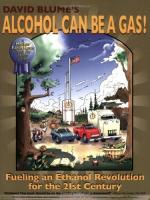|
This section contains 505 words (approx. 2 pages at 300 words per page) |

|
Ethanol (C2H5OH), also known as ethyl alcohol or grain alcohol, is a colorless, flammable liquid. It is the second-simplest compound in the alcohol family, whose molecules are characterized by a hydroxyl group (OH-) attached to a carbon atom. It is naturally created by the fermentation of fruit, grains, and other agricultural products containing starch or sugars.
Ethanol was first synthesized by Pierre Berthelot around 1860. Berthelot used ethylene, a petroleum by-product, to make a synthetic ethanol that was indistinguishable from the naturally occurring alcohol.
Pure ethanol is rated at 200 proof—more than twice the strength of most hard liquors. However, pure alcohol is made undrinkable, or denatured, by additives such as methanol and kerosene. This denatured ethanol, which is not taxed as an alcoholic beverage, is used in thousands of products including antifreeze, drugs, cleaning agents, solvents, toiletries, and rubbing alcohol. Ethanol is also a raw...
|
This section contains 505 words (approx. 2 pages at 300 words per page) |

|


